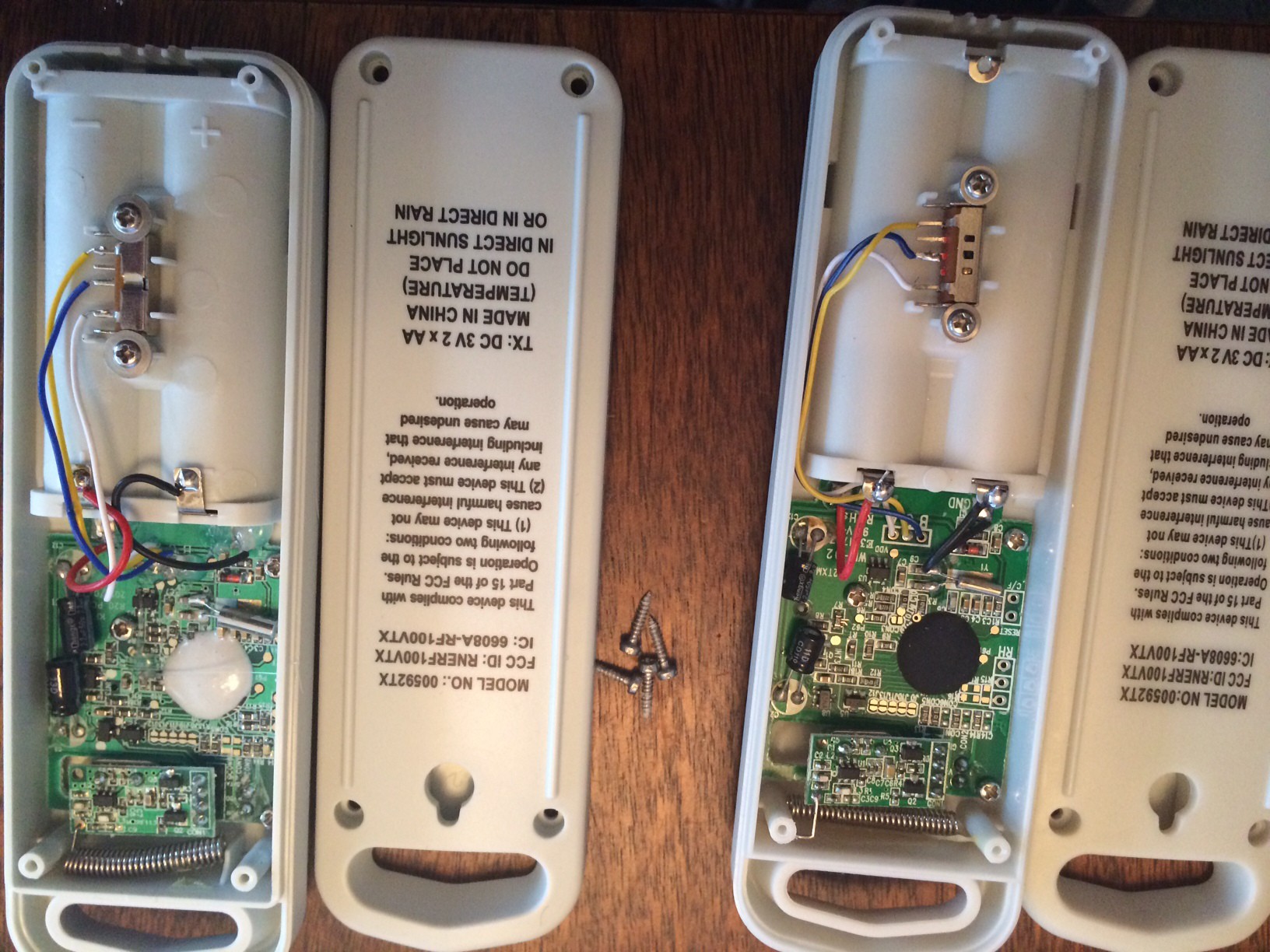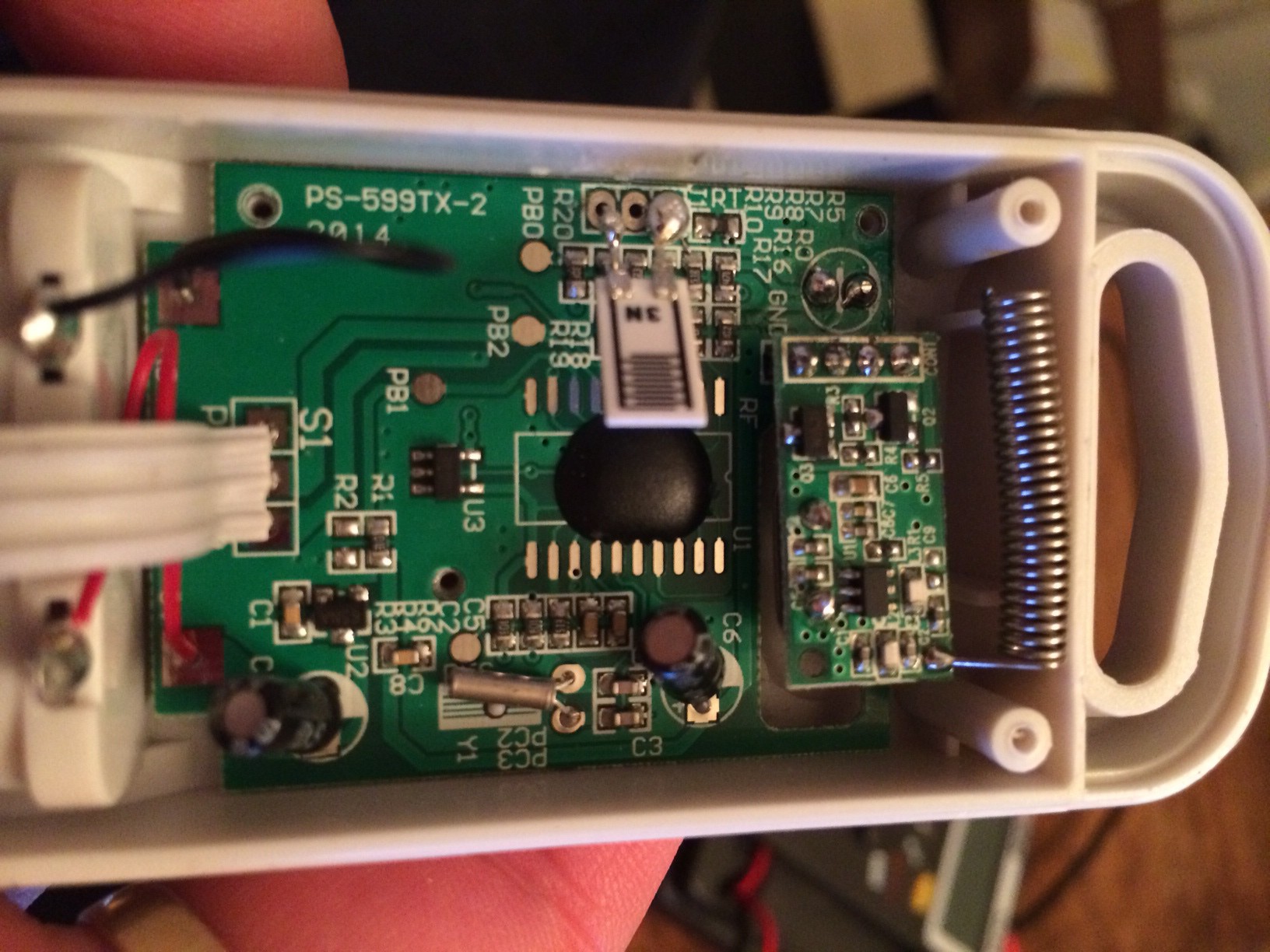Looking at the internals of the two sensors I had, I noticed that the humidity sensor and a few other (probably supporting) components were missing. Of course I can't go without knowing what belongs there, so I ordered two "temperature and humidity" sensors directly from the acurite website. Same part number as the thing I had already.
First, the old units:

Some minor manufacturing differences (and defects) aside, you can see that on the left there's a spot for the humidity sensor. Here's a crop:

(And no, I don't know why there would be a C/F jumper on the transmitter. Poking at it, I couldn't make the device do anything differently when jumping it in various odd ways.)
So here's the new sensor:
..

Obviously, a new rev of the circuit. On the left, there's a humidity sensor (which is very, very badly soldered; the lower lead has a glop of solder on it that isn't even soldered to the pad).
And it's DOA.
Okay, not *totally* DOA. It blinks periodically. Sticking a logic probe on the data pin of the transmitter, I see it trying to transmit (three packets, just like the other sensors). But I'm not receiving any data from it at all.
A second that I bought at the same time works just fine. So it's not a general problem receiving from the new units. Naturally, I suspected the lousy soldering job; resoldering the humidity sensor doesn't make a difference.
I suspect that either the transmitter is misaligned and transmitting on a different frequency, or the transmitter is just plain dead. I'll have to get my SDR radio working to see if any RF is coming out of this thing.
All of the exposed pads around the IC also intrigue me. I wonder what kind of processor that is, and if something fun can be done to it...
 Jorj Bauer
Jorj Bauer
Discussions
Become a Hackaday.io Member
Create an account to leave a comment. Already have an account? Log In.